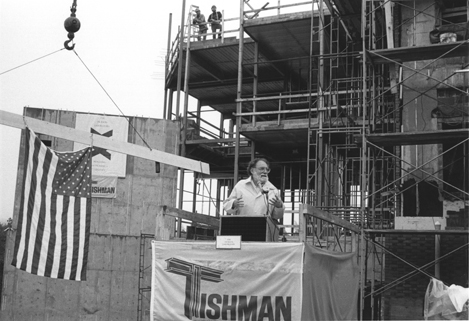
Faculty Research 1990 - 1999
Development and aging of primitive hematopoietic stem cells in BALB/cBy mice.
Document Type
Article
Publication Date
1999
Keywords
Aging/physiology, Animal Cell-Aging, Cell-Division Hematopoietic-Stem Cells, Mice, Mice-Inbred-BALB-C
First Page
928
Last Page
935
JAX Source
Exp Hematol 1999 May;27(5):928-35
Grant
HL58820/HL/NHLBI, HL55281/HL/NHLBI, AG05754/AG/NIA
Abstract
Evaluating the function of an individual hematopoietic stem cell (HSC) is a difficult and important problem. The functional ability per HSC, as well as the HSC concentration, was measured with minimal disruption to the cells in vivo using the new competitive dilution assay. Distribution of HSC into recipients was modeled based on Poisson probabilities. Predictions of donor contributions from models assuming different levels of donor HSC functional ability and concentration were compared to actual observations. The model with the least difference between predictions and observations was accepted. In BALB/ cBy (BALB) mice, models assuming equal functional ability of HSC from the same donor fit extremely well with actual observations, suggesting that all HSC are functionally homogeneous at any particular time point during development or aging. Relative HSC functional ability per cell declined during development, so that a fetal HSC had 1.6 to 3.0 times the functional ability of a young adult HSC. The decline continued with age, so that a young adult HSC had 1.6 to 2.0 times the functional ability of an old HSC. Concentrations of HSC that engrafted and functioned were similar among 16-day fetal liver cells and bone marrow cells (BMC) from 3-month and 25 to 28-month-old adult mice. They were either 10 or 4 HSC per million cells when tested in BALB or CByB6F1 recipients, respectively. All HSC were pluripotent and produced lymphoid and myeloid descendants proportionally (r = 0.80 to 0.98, p < 0.01). Fetal and young HSC in both types of recipients maintained clonal stability long term so that percentages of donor cells at 6 and 9 months were strongly correlated (r = 0.72 to 0.93, p < 0.01). Although HSC from aged donors in BALB recipients maintained clonal stability, HSC from the same aged donors failed to show clonal stability in CByB6F1 recipients, perhaps due to the less suitable host environment. All HSC from BALB mice seemed to have equal functional levels at a given stage of life and were gradually exhausted simultaneously through development and aging.
Recommended Citation
Chen J,
Astle CM,
Harrison DE.
Development and aging of primitive hematopoietic stem cells in BALB/cBy mice. Exp Hematol 1999 May;27(5):928-35

